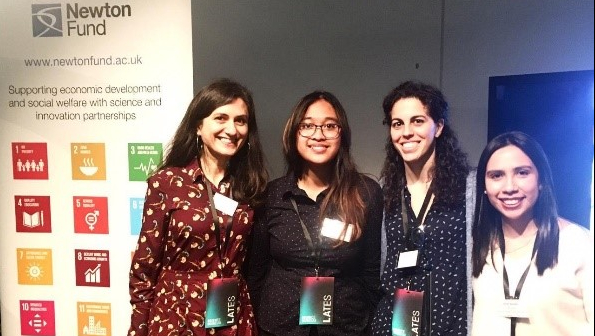AMEN: Addressing Mercury Pollution in Colombia with Natural Fibers
AMEN studies native natural fibers in fabricating affordable and easy tools for mercury pollution detection and remediation from polluted water in Colombia.

AMEN seeks to address mercury contamination in water by looking at two different aspects: remediation process and environmental analysis. Therefore, the main goal of this project is to investigate the feasibility of native natural fibers (Fulcraea andina, commonly known by the locals as ‘fique’) as a particular platform to fabricate affordable and easy-to-use tools for mercury pollution detection and its remediation from polluted water bodies in Colombia. The objectives of the project are summarised as follows:
Explore chemical functionalisation of fibres to promote mercury removal from water
Apply the modified fibre composite in the remediation of mercury from contaminated waters collected in Colombia
Investigate the suitability of raw fibres as substrate for the development of biodegradable carbon-based electrochemical sensors
Apply the developed sensors for mercury detection in water samples collected in Colombia and integrate them within the decontamination system using fibre composite to evaluate the effectiveness of the material
Project outline
Colombia is the third most affected country in the world for mercury contamination due to intense illegal gold mining. The toxic metal seriously pollutes rivers and sediments, firstly affecting the food chain primarily via bioaccumulation in fishes, and secondly by contaminating vegetables and fruits irrigated with this water. Moreover, during the dry season, the lack of infrastructures for drinking water provision forces the communities to drink the water from the river. The majority of these communities live in remote areas following ancient lifestyle traditions, which, in addition to scarce economic resources and poor government support, makes difficult any adequate monitoring and water treatments.
By engaging with local communities and empowering them in the use of technology and data collection, scientific community can actually face the challenge of reaching vulnerable groups and make simple, possible and affordable both treatment and analysis of contaminated water. Therefore, the integration of familiar native fibres, which are used by indigenous women to produce typical handicrafts following traditional techniques inherited by their ancestors, to develop novel materials and devices is a very trustful way for communities to collaborate in our studies towards health and environmental pollution problems. It is also a way to innovate in the fabrication of ecological materials that are directly beneficial to the environment and make technology more accessible to all.
Science
The main scientific output of this project has been the successful development of a novel functionalised-fique fibre material that has demonstrated to remove effectively an 85% of mercury in water in less than 30 min. Moreover, the integration of electrochemical sensors as analytical tool to detect mercury remaining after decontamination with fibre has made possible the direct, reliable and fast quantification of this pollutant.
This project has brought other fruitful academic outcomes, such as participation in an event organised by the Science Museum in London, collaboration in a MBA project case at University of Bath, one Chemical Engineering undergraduate final project and a 6 months visiting PhD student from Universidad Nacional de Colombia (Karen Bastidas) to the University of Bath. Several collaborative scientific papers between Colombia and UK are also in preparation.
Impact
In order to guarantee the fundamental rights of vulnerable communities in Colombia and to protect the environment, it is necessary to have a control of the level of pollution of drinking water. By combining the utilisation of natural fibres, which are very well-known by communities, with the sophistication of engineering and science for their functionalisation, we have developed in this project a very useful tool to monitor mercury pollution in water as well as we have obtained a practical material to decontaminate water from this pollutant in a real easy way. The utilisation of fique fibres as support of both technologies increases communities confidence towards application of technology, adds value to a waste product, minimises environmental impacts and reduces significantly the overall cost of the technology.
This project is led by Dr Mirella di Lorenzo and involves Dr Elena Bernalte, Dr Bernardo Castro, Dr Mathew Lennox, Professor Janet Scott, Dr Emile Engel and Dr Pedro Estrela. Dr Hugo Zea, Dr Cesar Sierra and Ms Karen Bastidas from Colombia are also involved.


